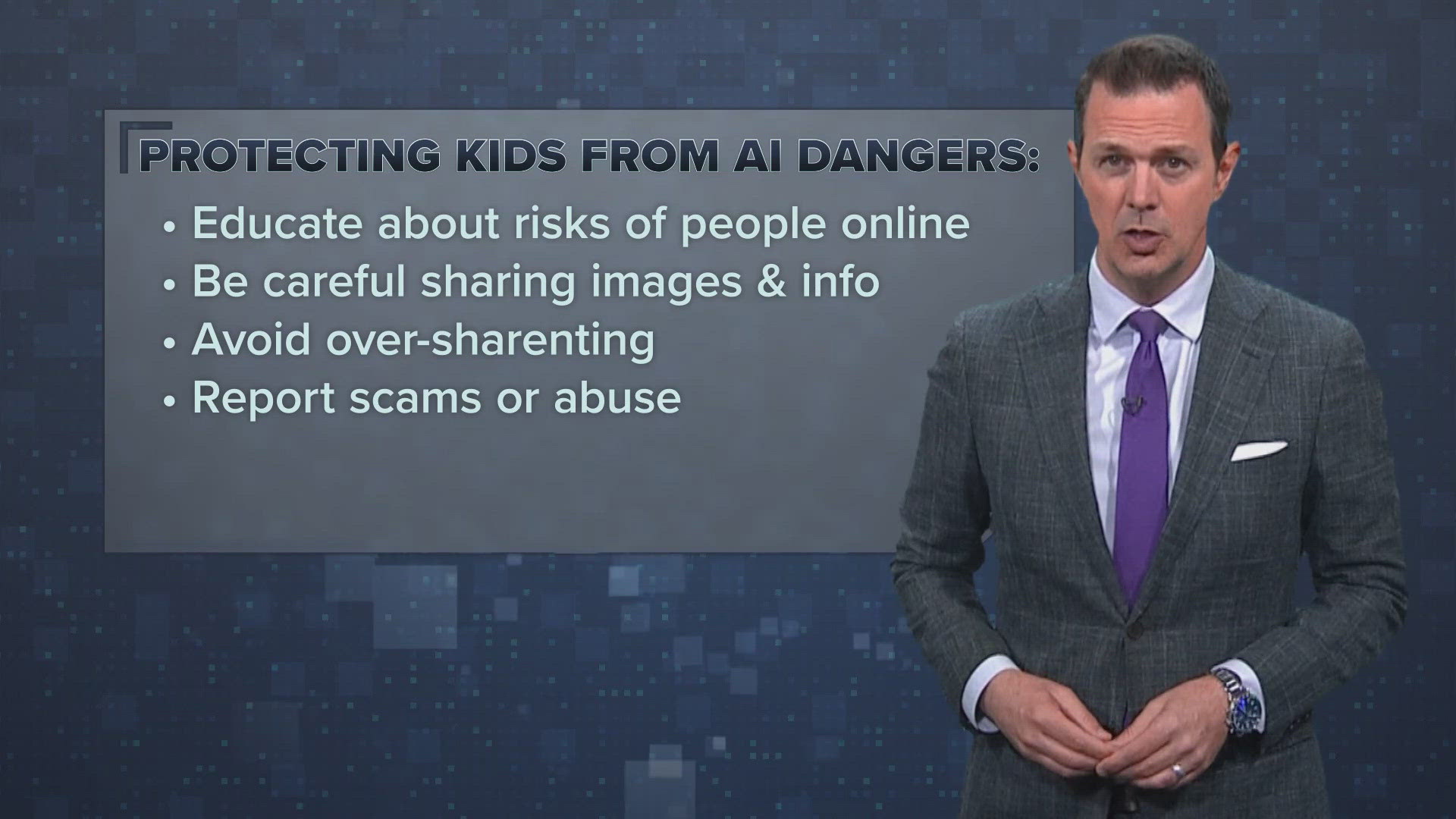DALLAS — It seems artificial intelligence is everywhere. New stories on AI technology both tout the powerful new worlds it can create and warn of its unchecked growth.
Simply put, “artificial intelligence” refers computer systems performing tasks so complex they used to only be done by people. Examples include answering complex verbal questions, creating works of art, composing music, solving problems, even learning over time. The implications are tremendous, with the power to tackle or automate some of our most difficult tasks. But there are substantial risks, especially when it comes to AI software’s ability to create lifelike images and video, where the real and fake are indistinguishable. Like many technologies, it all depends on how it’s being used.
“It’s much harder to understand and decipher,” says digital safety expert Yaron Litwin, who is also the CMO of Canopy, an app for parents to protect their kids online. “Is this a real image or not? And that’s where kind of the trouble comes in.”
He’s referencing deepfakes, a specific type of image, created by AI, that can basically depict someone anywhere, doing anything. Recently, pop megastar Taylor Swift was the victim of a series of deepfake images flooded X, fake pornographic pictures that were widely circulated.
The story served as a warning to parents of just how powerfully dangerous AI technology is when it’s in the wrong hands.
“What we’re talking about here is the ability to manipulate images and put your kids at risk,” says Litwin.
Experts have already seen countless reports of lifelike, fake images of children, in compromising situations, used for cyberbullying. Or worse, scammers using the technology to create fake explicit images to use for sextortion – blackmailing an underage child.
Litwin says the implications can be dangerously severe. “Unfortunately, in both cases, we're seeing a huge increase in the amount of these type of cases, and sometimes it unfortunately leads to, to suicide.”
So how can parents protect their kids?
Litwin has several recommendations. First, he suggests parent control app like Canopy or Bark, which can filter explicit content, limit screen time, or even use artificial intelligent to help prevent kids from sending inappropriate messages or pictures.
Secondly, he tells parents to educate their kids that not everyone they meet online is a friend, and to be especially careful sharing images or information.
And Litwin cautions parents to avoid over “sharenting,” the habit of posting family pictures and private information all over social media beyond the circle of close family and friends.
And finally, he says it’s important for parents to create an environment where kids feel safe in sharing if they do happen to be a victim of scam or abuse. In that case, contact local school or law enforcement authorities or the National Center for Missing and Exploited Children at cybertipline.org or 800-THE-LOST.
“Knowing they can come to their parents, have that conversation, I think it's critical,” Litwin says. “ Not being afraid to share. That is where unfortunately, some of these cases go down these paths that no parent wants to deal with.”

